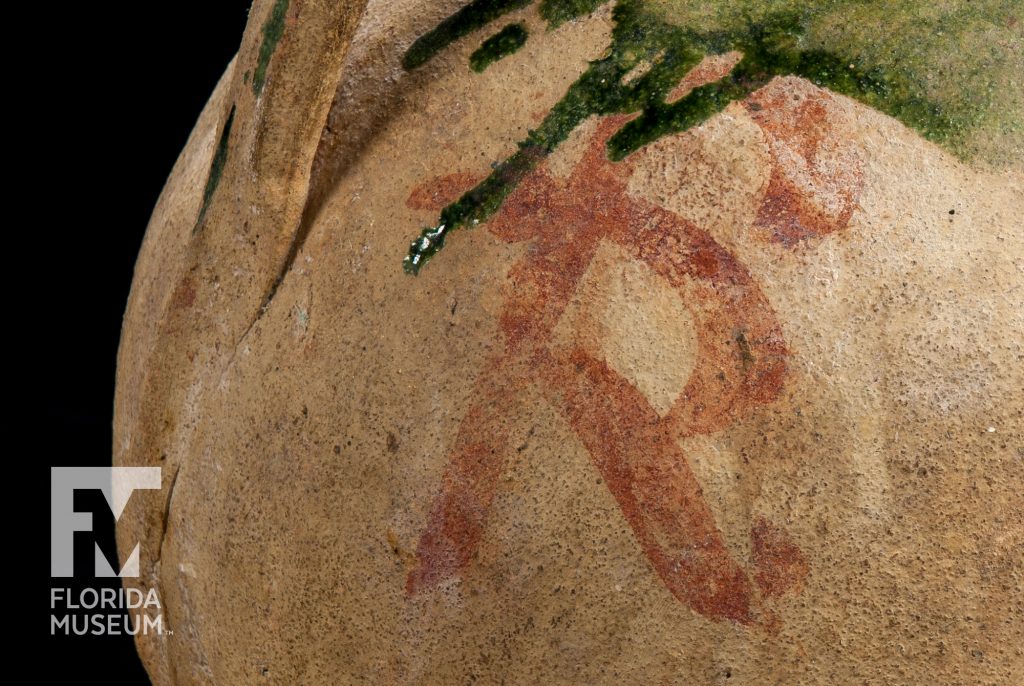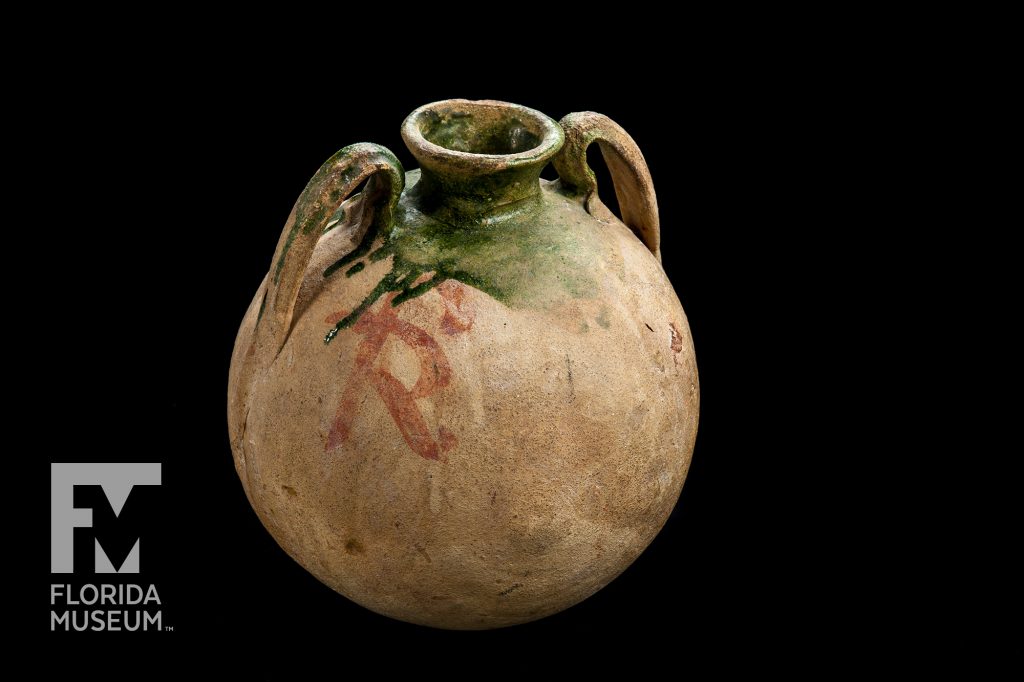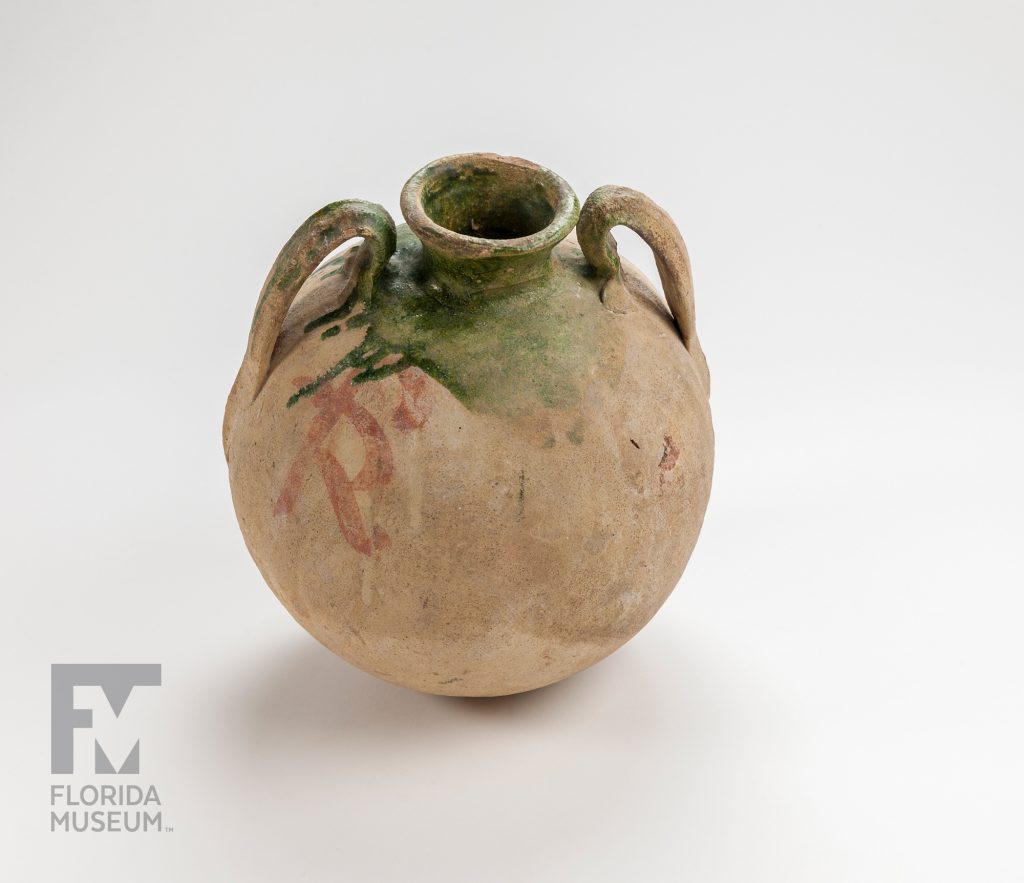Spanish colonists used olive jars to ship olive oil, wine, honey and other goods. Archaeologists rarely find intact jars. This olive jar is also unique because of the painted red “R”, likely the maker’s initial.
Summary
Spanish Olive Jar
From Ciudad Trujillo, Dominica Republic
Dates to AD 1500–1570
Collection
Story
Olive jars were the ubiquitous storage and shipping containers for the Spanish-American colonies and evolved in shape and manufacturing technique over four centuries. They were used to ship olive oil, wine, honey, soap and other items. This particular one is an early style olive jar identified by its unique rim shape, handles and two-part manufacturing technique. It was found in the Dominican Republic and dates to the 16th century. It’s rare to find fully intact olive jars, and what makes this one even more unique is the “R” painted in red, which is likely the initial of the vessel’s maker.
Gifford Waters
Collection Manager, Historical Archaeology*
Florida Museum of Natural History
Exhibit
On display Sept. 23, 2017-Jan. 7, 2018, Rare, Beautiful & Fascinating: 100 Years @FloridaMuseum celebrated the Museum’s rich history. Each Museum collection was asked to contribute its most interesting items and share the stories that make them special. Though the physical exhibit is closed, this companion website remains online, providing an opportunity to experience the Florida Museum’s most treasured specimens.
Exhibit Area: Objects Tell Stories
Theme: Spanish Colonial Archaeology
 Want to see more? Explore more than 300 breathtaking color photos of plants, animals, fossils and cultural heritage materials from the Florida Museum of Natural History’s collections in the award-winning book All Things Beautiful available from the University Press of Florida.
Want to see more? Explore more than 300 breathtaking color photos of plants, animals, fossils and cultural heritage materials from the Florida Museum of Natural History’s collections in the award-winning book All Things Beautiful available from the University Press of Florida.
*This title was accurate at the time the exhibit was on display in 2017. Please visit the collection website to verify current staff and student information.


